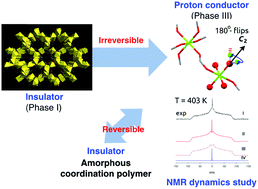Transformation of a proton insulator to a conductor via reversible amorphous to crystalline structure transformation of MOFs†
Abstract
In this study, a successful proton conduction modulation of MOFs, from an ionic insulator to an ionic conductor, is demonstrated through their structural transformation. It is shown that the reversible structural change from amorphous to crystalline phases allows for the reversible proton conduction modulation of MOFs. Moreover, the proton conduction mechanism of the ionic conductor phase is elucidated by 2H NMR analysis.



 Please wait while we load your content...
Please wait while we load your content...